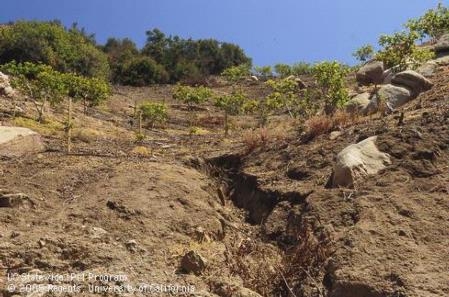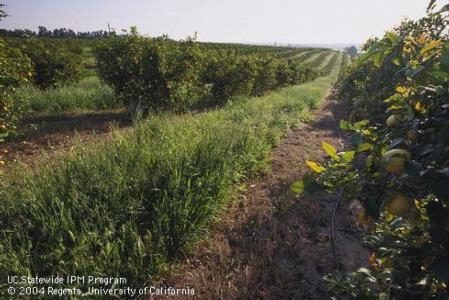Soil erosion threatens our ability to feed ourselves in the future. Current concerns regarding soil erosion include economic vitality, environmental quality and human health.
How can losing a little soil to erosion be such a concern? Soil formation is a very slow process. It takes nature between 300 to 1,000 years to replace soil lost over a 25 year period at a loss rate of 1 mm per year. (25 mm is approximately 1 inch)
Erosion reduces the productivity in several ways: plants are not able to use nutrients as efficiently; seedlings are damaged; rooting depth is decreased; soil’s water-holding capacity is diminished; permeability is decreased; runoff increases; and the infiltration rate declines. The loss of healthy soil leads to poor plant growth and lower crop yields.
In the United States we lose an estimated 6.9 billion tons of fertile topsoil to erosion each year. Losses of this size are far from sustainable. In an effort to continue food production costly fertilizers and amendments are used to compensate for the lost soil. The loss of nutrients alone is estimated to cost U.S. farmers $20 billion a year.
As runoff carries sediment, nutrients, and agricultural chemicals off-site the economic and environmental costs skyrocket.
The University of California has resources to help reduce the loss of soil through erosion. Understanding Soil Erosion of Irrigated Agriculture provides information to help maintain the productivity of land and reduce the enormous costs associated with erosion.
Topics include:
- Impacts of soil erosion
- Types of water erosion
- Indicators of soil erosion
- Soil survey interpretations
- Land capability classification system
- Soil erosion factors
- New soil survey resources
Additional resources, for both commercial growers and home gardeners, can be found in our previous soil posts.

